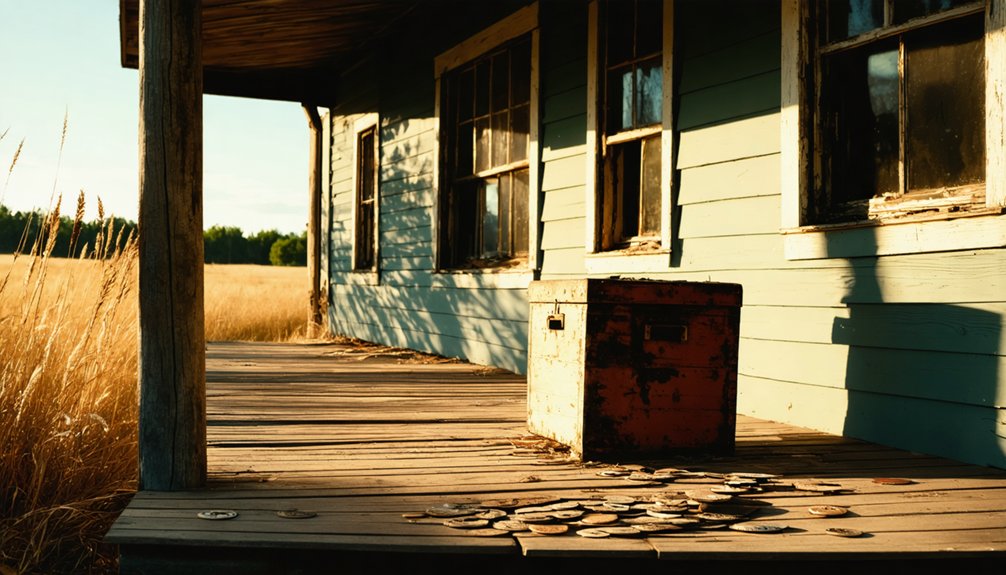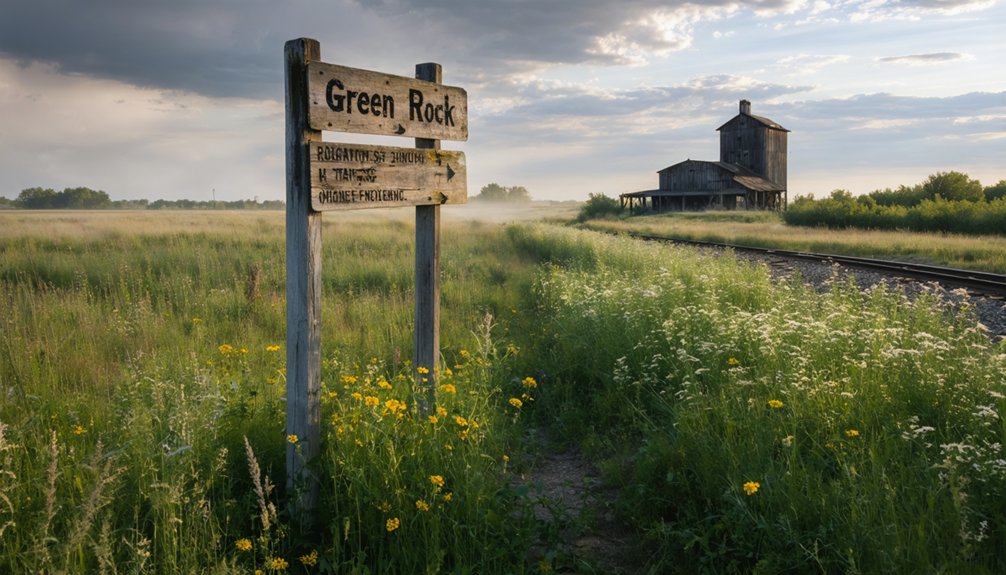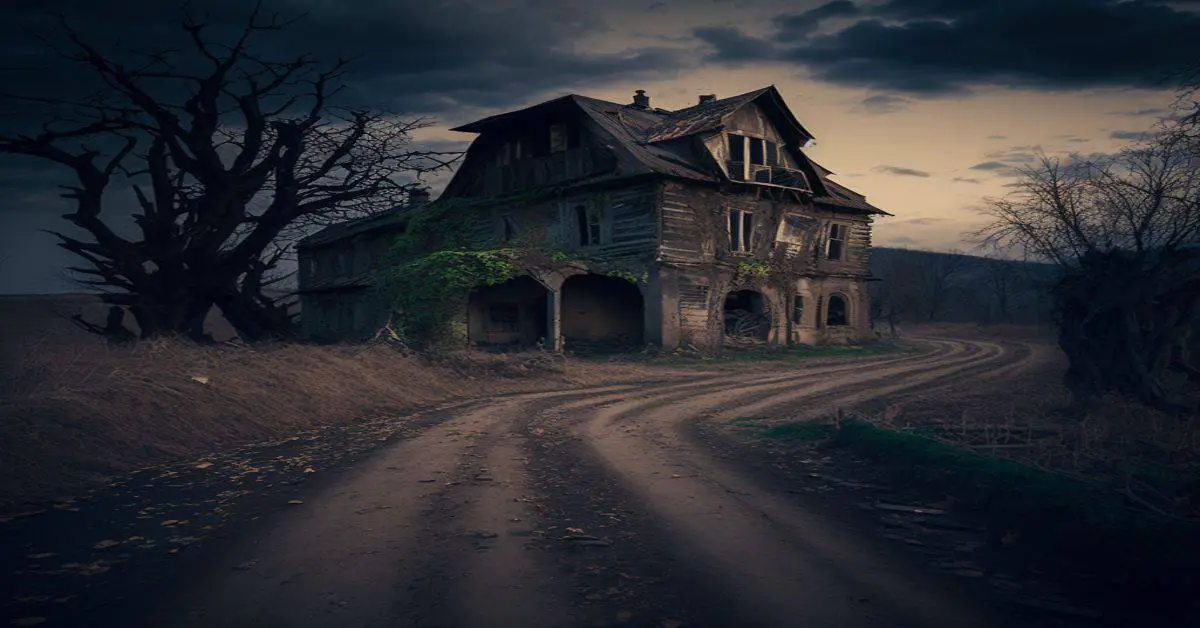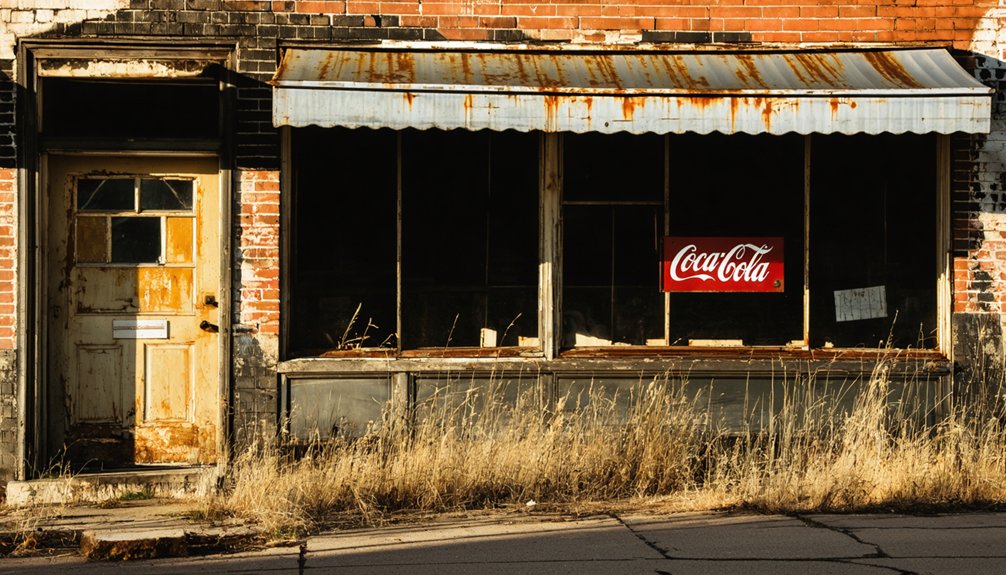You won’t find abandoned buildings in Green Rock, Illinois – instead, you’ll discover a community that made history through Illinois’ first voluntary municipal merger. Established in 1939 at the confluence of the Green and Rock rivers, this planned settlement thrived until 1997, when residents voted to unite with neighboring Colona. While Green Rock no longer appears on modern maps, its legacy lives on in Colona’s neighborhoods, street names, and the enduring influence of its two defining rivers.
Key Takeaways
- Green Rock is not a ghost town but merged with Colona in 1997 through Illinois’ first-ever voluntary community merger.
- The community continues to exist as a neighborhood within Colona, maintaining active residents and infrastructure.
- Historic landmarks, street names, and infrastructure from Green Rock remain in use within modern-day Colona.
- The merger vote of 566 to 492 in 1995 demonstrates the area was populated and functioning when integrated into Colona.
- Regular community gatherings and documented local history show Green Rock maintains an active presence rather than abandonment.
The Birth and Early Days of Green Rock
While many Illinois towns evolved organically from settlements, Green Rock emerged as a planned community in 1939 when surveyors mapped out its location at the confluence of the Green and Rock rivers.
You’ll find its name reflects these natural landmarks rather than honoring a founder, setting it apart from typical Illinois naming conventions.
Despite foundational challenges, including reliance on neighboring Colona for postal services, Green Rock’s early businesses demonstrated community resilience.
Like the mining town of Green Ridge, which operated until mining ceased in 1923, Green Rock’s strategic position near two rivers offered potential for commerce and transport-related growth.
By 1950, Green Rock had secured its independence through official city incorporation, establishing its own municipal governance.
This unique birth as an incorporated city, rather than evolving from an unincorporated town, positioned Green Rock distinctively within Illinois’s municipal landscape.
The neighboring town of Colona was established nearly five decades before Green Rock, in 1903.
A Tale of Two Rivers
As Green Rock evolved at the meeting point of its namesake rivers, these waterways profoundly shaped the community’s development throughout the 20th century.
With characteristics similar to the heavy precipitation in Oregon’s Josephine County, the local climate supported robust agricultural development along the riverbanks.
You’ll find the river ecology of both the Green and Rock Rivers played a crucial role in sustaining local agriculture and transportation, while supporting diverse fish populations that became integral to the area’s recreation.
Similar to the ancient channel alteration of the Illinois River, the rivers weren’t just passive features – they actively influenced community heritage through human modification, particularly when the Green River was engineered to drain swampland for farming.
These waterways served as natural boundaries that directed urban growth patterns and fostered connections between neighboring communities.
This relationship between water and community would later influence the historic 1997 merger with Colona, as both towns recognized their shared geographical identity and economic interests.
Life Before the Merger
You’ll find Green Rock’s unique position at the meeting point of the Green and Rock Rivers shaped its early identity as a river town after its 1950 incorporation.
Your mail would have come through neighboring Colona’s distribution system, highlighting the deep interconnection between these communities from the start.
The advent of rail transport networks in Illinois between 1833 and 1873 brought new economic opportunities to river communities like Green Rock.
The Chicago Bears establishment in 1921 brought professional football excitement to Illinois communities like Green Rock.
While you’d have found several active businesses in Green Rock during its independent years, the community’s close ties with Colona eventually led to merger discussions in the late 1960s.
Early River Town Setting
Located at the meeting point of the Green and Rock Rivers, Green Rock emerged as a distinctive community shaped by its riverine environment.
The town’s early settlers strategically built on river terraces to avoid flooding while maximizing the rich black soil for floodplain agriculture. You’ll find this practical adaptation reflected in the street layout, which followed the river’s contours rather than strict compass directions. Similar to the challenges faced by Fox River settlers, residents had to carefully consider seasonal water fluctuations when planning their town’s development.
- The fertile soil, deposited by centuries of river activity, supported thriving farms on the elevated terraces.
- Wide floodplains contained a network of lakes and wetlands before drainage improvements.
- While the rivers weren’t ideal for navigation, they provided essential waterpower potential that attracted early millwrights.
These natural features created both opportunities and challenges that would define Green Rock’s development throughout its history. The area contained approximately 70,000 acres of timber land along the riverbanks, providing crucial building materials for the earliest structures.
Business and Mail Services
While Green Rock achieved city status in 1950, its business landscape remained intimately tied to neighboring Colona’s infrastructure and services.
You’d find local enterprises capitalizing on the town’s location near the Green and Rock Rivers, but they faced ongoing business challenges due to limited independent infrastructure. Much like in The Sucker State, small businesses struggled to establish themselves independently.
Perhaps most significantly, Green Rock never established its own post office, instead relying on Colona for all postal services. This postal history reflected a deeper dependency that shaped the town’s economic development.
Local businesses operated alongside Route 84, which physically divided the two communities while economically connecting them.
Despite competition from the more established Colona, Green Rock’s merchants persisted through the mid-20th century, though their growth potential remained constrained by the town’s reliance on shared services.
Community Decision Making Process
Since its incorporation as a city in 1950, Green Rock maintained an independent municipal government structure despite its close ties to neighboring Colona. Like many ghost town communities, Green Rock’s governance approach reflected broader socioeconomic changes affecting small American towns in the mid-20th century.
You’d find strong community engagement through local elections and municipal decision-making processes that shaped the city’s governance and resource allocation.
Key aspects of Green Rock’s civic participation included:
- Active voting on major community decisions, including the 1968 merger attempt where Green Rock residents supported union with Colona.
- Shared service arrangements with Colona that demonstrated practical cooperation between communities.
- Community planning focused on managing the city’s limited commercial infrastructure while maintaining its distinct identity.
The town’s decision-making process reflected both its geographical position at the confluence of two rivers and its status as a smaller municipality maneuvering relationships with more established neighbors.
The Historic Vote That Changed Everything

After decades of separate governance, the communities of Green Rock and Colona made Illinois history through a landmark merger vote in 1995.
You’ll find historic significance in the 566-492 vote that forever changed these riverside towns, marking the first time in Illinois that two communities merged by popular choice. The merger implications reached far beyond simple administrative changes – it reshaped the region’s future.
While Green Rock residents had supported unification back in 1968, it wasn’t until this second vote that both communities finally agreed to join forces.
The successful 1995 referendum led to careful planning and legal procedures, culminating in the April 1997 official merger. The unified municipality took Colona’s name, preserving Green Rock’s legacy within its expanded borders.
Legacy and Transformation
While you won’t find Green Rock on modern maps as an independent city, its spirit endures in the vibrant neighborhood culture within today’s Colona, where residents maintain strong connections to their merged community’s unique origins.
The confluence of the Green and Rock Rivers continues to shape the area’s identity, just as it did when surveyors first platted Green Rock in 1939.
The historic 1997 merger, rather than erasing Green Rock’s legacy, transformed it into a precedent-setting example of how small Illinois communities can successfully unite through democratic processes while preserving their cultural heritage.
Community Spirit Lives On
The spirit of Green Rock endures within Colona’s modern fabric, demonstrating how a community’s essence can transcend municipal boundaries.
You’ll find this legacy alive in shared celebrations and community events that honor both cities’ intertwined histories. The 1997 merger, Illinois’s first voluntary town consolidation by popular vote, set a precedent for maintaining local identity while embracing progress.
- Former residents continue sharing stories and memories, preserving Green Rock’s distinct character through oral tradition.
- Local historians document Green Rock’s achievements in publications and heritage projects.
- Annual gatherings and reunions strengthen intergenerational bonds, keeping the community’s spirit vibrant.
The neighborhood’s physical landmarks and street names serve as permanent reminders of Green Rock’s independence, while its collaborative spirit enriches Colona’s contemporary identity.
Rivers Shape Modern Identity
Beyond shared memories and community bonds, Green Rock’s enduring identity flows directly from its namesake waterways. You’ll find the Green and Rock Rivers‘ influence woven throughout the town’s story – from its 1939 founding to its eventual merger with Colona in 1997.
These rivers didn’t just define boundaries; they shaped the community’s economic interdependence and social fabric.
Even after the merger, you can trace the river heritage in local narratives and physical landmarks. The waterways that once dictated transportation routes and commerce patterns continue to anchor the area’s character.
While Green Rock may no longer exist as an independent municipality, its dual-river setting remains a distinctive feature, preserving the geographic uniqueness that first established this Illinois settlement’s identity.
Landmarks Lost and Found

Unlike traditional ghost towns marked by abandoned buildings and deteriorating infrastructure, Green Rock’s landmarks were absorbed rather than lost through its 1997 merger with Colona.
You won’t find the typical lost landmarks or ghost stories here – instead, the city’s identity shifted seamlessly into its neighbor’s fabric.
While exploring modern Colona, you’ll notice:
- Illinois Route 84, which once divided the two communities, now serves as a unifying thoroughfare
- The historic railroad infrastructure that sparked Green Rock’s founding remains active and essential
- Business districts and residential areas continue to thrive, though now under Colona’s administration
The absence of ruins or abandoned structures tells the story not of a ghost town, but of a community that chose unity over decay, transforming through democratic process rather than desertion.
Modern-Day Green Rock: A Neighborhood’s Story
Since merging with Colona in 1997, Green Rock has evolved from an independent municipality into a distinctive neighborhood within Henry County’s growing city of Colona.
Green Rock’s 1997 merger transformed it from a standalone town into a vibrant community within Colona’s expanding boundaries.
You’ll find this historic community nestled at the confluence of the Green and Rock Rivers, maintaining its neighborhood identity despite the political change.
While the merger marked Illinois’ first-ever consolidation by mutual consent rather than annexation, Green Rock’s community resilience shines through its continued recognition as a distinct borough during the changing period.
Located at 41.473°N and -90.358°W, the area still contributes greatly to Colona’s total population of about 5,000 residents.
Though no longer independently governed, Green Rock’s natural setting and riverside location continue to define its character within the larger municipal framework.
Frequently Asked Questions
What Were the Major Industries That Employed Green Rock Residents?
You’d have found work in agricultural practices along the fertile river valleys, railroad-related jobs, river trade operations, and possibly mining operations in local quarries, plus small business and manufacturing roles.
Did Green Rock Experience Any Significant Natural Disasters Before Merging?
Though you might expect flood damage near two rivers, historical records don’t show any significant natural disasters in Green Rock before its 1997 merger. There’s no documented earthquake history either.
What Was the Peak Population of Green Rock Before 1997?
You won’t find direct census records of Green Rock’s peak population, but population trends suggest it stayed particularly smaller than Colona’s 2,237 residents before their 1997 historical growth merger.
Were There Any Notable Crimes or Major Incidents in Green Rock?
Like a clean slate in history’s pages, you won’t find major documented crimes in the records. Despite local folklore hinting at Prohibition-era activities, there aren’t any confirmed unsolved mysteries or notable incidents.
Did Any Famous People or Historical Figures Come From Green Rock?
You won’t find any nationally famous residents or historically significant figures from Green Rock. Available records don’t indicate any well-known personalities emerged from this small Illinois community before its 1997 merger with Colona.
References
- https://www.youtube.com/watch?v=dV1Q41xepBA
- https://drloihjournal.blogspot.com/2022/04/lost-towns-of-illinois-green-rock-illinois.html
- https://www.heraldtimesonline.com/story/lifestyle/home-garden/2021/01/15/some-illinois-ghost-towns/43846097/
- https://www.geotab.com/ghost-towns/
- https://drloihjournal.blogspot.com/p/lost-towns-of-illinois-series.html
- https://en.wikipedia.org/wiki/Green_Rock
- https://en.wikipedia.org/wiki/List_of_ghost_towns_in_Illinois
- https://history.weld.gov/County-150/Weld-County-Towns/Ghost-Towns-in-Weld-County
- http://livinghistoryofillinois.com/pdf_files/Green Rock
- http://library.isgs.illinois.edu/Pubs/pdfs/circulars/c565.pdf



